
Dressed to Dazzle You should spend about 20 minutes on Questions 1-14 which are based on the Reading Passage below. Dressed to Dazzle As high-tech materials invade high-street fashion, prepare for clothes that are cooler than silk and warmer than wool, keep insects at arm's length, and emit many pinpricks of coloured light. The convergence of fashion and high technology is leading to new kinds of fibres, fabrics and coatings that are imbuing clothing with equally wondrous powers. Corpe Nove, an Italian fashion company, has made a prototype shirt that shortens its sleeves when room temperature rises and can be ironed with a hairdryer. And at Nexia Biotechnologies, a Canadian firm, scientists have caused a stir by manufacturing spider silk from the milk of genetically engineered goats. Not surprisingly, some industry analysts think high-tech materials may soon influence fashion more profoundly than any individual designer. A big impact is already being made at the molecular level. Nano-Tex, a subsidiary of American textiles maker Burlington, markets a portfolio of nanotechnologies that can make fabrics more durable, comfortable, wrinkle-free and stain-resistant. The notion of this technology posing a threat to the future of the clothing industry clearly does not worry popular fashion outlets such as Gap, Levi Strauss and Lands' End, all of which employ Nano-Tex's products. Meanwhile, Schoeller Textil in Germany, whose clients include famous designers Donna Karan and Polo Ralph Lauren, uses nanotechnology to create fabrics that can store or release heat. Sensory Perception Technologies (Spn embodies an entirely different application of nanotechnology. Created in 2003 by Quest International, a flavour and fragrance company, and Woolmark, a wool textile organisation, SPT is a new technique of embedding chemicals into fabric. Though not the first of this type, SPT's durability (evidently the microcapsule containing the chemicals can survive up to 30 washes) suggests an interesting future. Designers could incorporate signature scents into their collections. Sportswear could be impregnated with anti-perspirant. Hayfever sufferers might find relief by pulling on a T-shirt, and so on. The loudest buzz now surrounds polylactic acid (PLA) fibres - and, in particular, one brand-named Ingeo. Developed by Cargill Dow, it is the first man-made fibre derived from a 100% annually renewable resource. This is currently maize (corn), though in theory any fermentable plant material, even potato peelings, can be used. In performance terms, the attraction for the 30-plus clothes makers signed up to use Ingeo lies in its superiority over polyester (which it was designed to replace). As Philippa Watkins, a textiles specialist, notes, Ingeo is not a visual trend. Unlike nanotechnology, which promises to 'transform what clothes can do, Ingeo's impact on fashion will derive instead from its emphasis on using natural sustainable resources. Could wearing synthetic fabrics made from polluting and non-renewable fossil fuels become as uncool as slipping on a coat made from animal fur? Consumers should expect a much wider choice of 'green' fabrics. Alongside PLA fibres, firms are investigating plants such as bamboo, seaweed, nettles and banana stalks as raw materials for textiles. Soya bean fibre is also gaining ground. Harvested in China and spun in Europe, the fabric is a better absorber and ventilator than silk, and retains heat better than wool. Elsewhere, fashion houses - among them Ermenegildo Zegna, Paul Smith and DKNY - are combining fashion with electronics. Clunky earlier attempts Involved attaching electronic components to the fabrics after the normal weaving process. But companies such as SOFTswitch have developed electro-conductive fabrics that behave in similar ways to conventional textiles. Could electronic garments one day change colour or pattern? A hint of what could be achieved is offered by Luminex, a joint venture between Stabio Textile and Caen. Made of woven optical fibres and powered by a small battery, Luminex fabric emits thousands of pinpricks of light, the colour of which can be varied. Costumes made of the fabric wowed audiences at a production of the opera Aida in Washington, DC, last year. Yet this ultimate of ambitions has remained elusive in daily fashion, largely because electronic textiles capable of such wizardry are still too fragile to wear. Margaret Orth, whose firm International Fashion Machines makes a colourchanging fabric, believes the capability is a decade or two away. Accessories with this chameleon-like capacity - for instance, a handbag that alters its colour are more likely to appear first. Questions 1-6 Look at the following list of companies (1-6) and the list of new materials below. Match each company with the correct material. Write the correct letter A-H next to the companies 1-6. NB You may use any answer more than once. 1 Corpe Nove 2 Nexia Biotechnologies 3 Nano-Tex 4 Schoeller Textil 5 Quest International and Wool mark 6 Cargill Dow New materials A material that can make you warmer or cooler B clothing with perfume or medication added C material that rarely needs washing D clothes that can change according to external heat levels E material made from banana stalks F material that is environmentally-friendly G fibres similar to those found in nature H clothes that can light up in the dark Questions 7-14 Complete the summary below. Write NO MORE THAN TWO WORDS from the Reading Passage for each answer. Major changes in fabrics Using plants Nanotechnology will bring changes we can see, while the brand called 7 _____________ will help the environment. Fibre made from the 8 ___________ plant has better qualities than silk and wool. Electronics In first attempts to use electronics, companies started with a material made by a standard 9 ____________ method and then they fixed 10 ______________ to the material. Luminex fabric • needs a 11 ___________ to make it work. • has already been used to make stage 12. _________________________ is not suitable for everyday wear because it is too 13 ______________________. The first products that can change colour are likely to be 14. _____________________ Answer: 1. D 2. G 3. C 4. A 5. B 6, F 7. Ingeo 8. soya bean 9. weaving 10. electronic components 11. battery 12. costumes 13. fragile 14. accessories/ handbags Reading Passage 2 You should spend about 20 minutes on Questions 14-26,which are based on Reading Passage 2 below. The Development Of Plastics A. When rubber was first commercially produced in Europe during the nineteenth century, it rapidly became a very important commodity, particularly in the fields of transportation and electricity. However, during the twentieth century a number of new synthetic materials, called plastics, superseded natural rubber in all but a few applications. B. Rubber is a polymer — a compound containing large molecules that are formed by the bonding of many smaller, simpler units, repeated over and over again. The same bonding principle 一 polymerisation一underlies the creation of a huge range of plastics by the chemical industry. C. The first plastic was developed as a result of a competition in the USA. In the 1860s, $10,000 was offered to anybody who could replace ivory — supplies of which were declining — with something equally good as a material for making billiard balls. The prize was won by John Wesley Hyatt with a material called celluloid. Celluloid was made by dissolving cellulose, a carbohydrate derived from plants, in a solution of camphor dissolved in ethanol. This new material rapidly found uses in the manufacture of products such as knife handles, detachable collars and cuffs, spectacle frames and photographic film. Without celluloid, the film industry could never have got off the ground at the end of the 19th century. D. Celluloid can be repeatedly softened and reshaped by heat and is known as a thermoplastic. In 1907 Leo Baekeland, a Belgian chemist working in the USA, invented a different kind of plastic by causing phenol and formaldehyde to react together. Baekeland called the material Bakelite, and it was the first of the thermosets’ plastics that can be cast and moulded while hot but cannot be softened by heat and reshaped once they have set. Bakelite was a good insulator and was resistant to water, acids and moderate heat. With these properties, it was soon being used in the manufacture of switches, household items, such as knife handles, and electrical components for cars. E. Soon chemists began looking for other small molecules that could be strung together to make polymers. In the 1930s, British chemists discovered that the gas ethylene would polymerize under heat and pressure to form a thermoplastic they called polythene. Polypropylene followed in the 1950s. Both were used to make bottles, pipes and plastic bags. A small change in the starting material 一 replacing a hydrogen atom in ethylene with a chlorine atom — produced PVC (polyvinyl chloride) ,a hard, fireproof plastic suitable for drains and gutters. And by adding certain chemicals, a soft form of PVC could be produced, suitable as a substitute for rubber in items such as waterproof clothing. A closely related plastic was Teflon, or PTFE (polytetrafluoroethylene). This had a very low coefficient of friction, making it ideal for bearings, rollers, and non-stick frying pans. Polystyrene, developed during the 1930s in Germany, was a clear, glass-like material, used in food containers, domestic appliances, and toys. Expanded polystyrene — a white, rigid foam — was widely used in packaging and insulation. Polyurethanes, also developed in Germany, found uses as adhesives, coatings, and — in the form of rigid foams — as insulation materials. They are all produced from chemicals derived from crude oil, which contains exactly the same elements ——carbon and hydrogen ——as many plastics. F. The first of the man-made fibers, nylon, was also created in the 1930s. Its inventor was a chemist called Wallace Carothers, who worked for the Du Pont Company in the USA. He found that under the right conditions, two chemicals — hexamethylenediamine and adipic acid would form a polymer that could be pumped out through holes and then stretched to form long glossy threads that could be woven like silk. Its first use was to make parachutes for the US armed forces in World War II. In the post-war years, nylon completely replaced silk in the manufacture of stockings. Subsequently, many other synthetic fibres joined nylon,including Orion, Acrilan, and Terylene. Today most garments are made of a blend of natural fibres, such as cotton and wool, and man-made fibres that make fabrics easier to look after. G. The great strength of the plastic is its indestructibility. However, this quality is also something of a drawback: beaches all over the world, even on the remotest islands, are littered with plastic bottles that nothing can destroy. Nor is it very easy to recycle plastics, as different types of plastic are often used in the same items and call for different treatments. Plastics can be made biodegradable by incorporating into their structure a material such as starch, which is attacked by bacteria and causes the plastic to fall apart. Other materials can be incorporated that gradually decay in sunlight 一 although bottles made of such materials have to be stored in the dark, to ensure that they do not disintegrate before they have been used. Questions 14-20 Complete the table below. Choose NO MORE THAN THREE WORDS from the passage for each answer. Write your answers in boxes 14-20 on your answer sheet. Name of plastic Date of invention Original region Property Common use Clothing Celluloid The 1860S US 15 ______ 1907 US Polythene The 1930s 17 ______ Rigid PVC and 14______ can be cast and molded but cannot be softened by heat 16 ______ ’household items and car parts bottles 18 ______ drains and gutters transparent Polystyrene The 1930s Germany Polyurethanes Germany and resembled Food container to 19 ______ domestic formation like 20 ______ adhesives, coatings, and insulation Questions 21-26 Do the following statements agree with the information given in Reading Passage 2? In boxes 21-26 on your answer sheet, write TRUE, if the statement is true FALSE, if the statement is false NOT GIVEN, if the information is not given in the passage 21. The chemical structure of plastic is very different from that of rubber. 22. John Wesley was a famous chemist. 23. Celluloid and Bakelite react to heat in the same way. 24. The mix of different varieties of plastic can make them less recyclable. 25. Adding starch into plastic does not necessarily make plastic more durable. 26. Some plastic containers have to be preserved in special conditions. ELTS General Training Reading: Formal Dress Code for Company Employees This General Training lesson focuses on Gap fill summaries. SECTION 2 Questions 15-27 Read the text below and answer Questions 15-21. FORMAL DRESS CODE FOR COMPANY EMPLOYEES At JLP, the company’s objective in establishing a formal dress code is to enable our employees to project the professional image that is in keeping with the needs of our clients and customers who seek our guidance, input, and professional services. Because our industry requires the appearance of trusted business professionals and we serve clients at our site on a daily basis, a more formal dress code is necessary for our employees. Formal Dress Code Guidelines In a formal business environment, the standard of dressing for men and women is a suit. Alternatively a jacket may be worn with appropriate accessories. Torn, dirty, or frayed clothing is unacceptable. Clothing should be pressed and never wrinkled. No dress code can cover all contingencies so employees must exert a certain amount of judgement in their choice of clothing to wear to work. If you experience uncertainty, please ask your supervisor for advice. Shoes and Footwear Conservative walking shoes, dress shoes, loafers, boots, flats, dress heels, and backless shoes are acceptable for work. Not wearing stockings or socks is inappropriate. Tennis shoes and any shoe with an open toe are not acceptable in the office. Accessories and Jewellery The wearing of ties, scarves, belts, and jewellery is encouraged, provided they are tasteful. Items which are flashy should be avoided. Makeup, Perfume, and Cologne A professional appearance is encouraged and excessive makeup is unprofessional. Remember that some employees may have allergic reactions to the chemicals in perfumes and makeup, so wear these substances in moderation. Hats and Head Covering Hats are not appropriate in the office. Head covers that are required for reasons of faith or to honour cultural tradition are permitted. Dress Down Days Certain days can be declared dress down days, generally Fridays. On these days, business casual clothing is allowed. Clothing that has our company logo is strongly encouraged. Sports team, university, and fashion brand names on clothing are generally acceptable. However, you may wish to keep a jacket in your office in case a client unexpectedly appears. Violation of Dress Code If clothing fails to meet these standards, as determined by the employee’s supervisor, the employee will be asked not to wear the inappropriate item to work again. If the problem persists, the employee will receive a verbal warning and may be sent home to change clothes. Complete the notes below. Choose NO MORE THAN TWO WORDS from the text for each answer. NOTES ON COMPANY DRESS CODE Aim of formal dress code: to present a 15 …………………. to clients Acceptable types of formal clothing: jacket or suit State of clothes: they must be 16 …………………. and in good condition Footwear: tennis shoes and open toe shoes are not allowed Accessories: ties, scarves, belts and jewellery may be worn – these must be 17 …………………. and not brightly coloured Makeup: avoid wearing too much makeup and perfume – these sometimes cause 18 ……………….. .. Hats: hats should not be worn – head covers in line with religious reasons or 19 …………………. are allowed Dressing down: casual clothing is allowed on some Fridays – clothing with the 20 …………………. on it is recommended Breaking the dress code: if advice is repeatedly ignored, a 21 …………………. is given NOTES ON COMPANY DRESS CODE Aim of formal dress code: to present a 15 professional image to clients At JLP, the company’s objective in establishing a formal dress code is to enable our employees to project the professional image that is in keeping with the needs of our clients and customers who seek our guidance, input, and professional services. Acceptable types of formal clothing: jacket or suit State of clothes: they must be 16 pressed and in good condition Torn, dirty, or frayed clothing is unacceptable. Clothing should be pressed and never wrinkled. Footwear: tennis shoes and open toe shoes are not allowed Accessories: ties, scarves, belts and jewellery may be worn – these must be 17 tasteful and not brightly coloured The wearing of ties, scarves, belts, and jewellery is encouraged, provided they are tasteful. Items which are flashy should be avoided. Makeup: avoid wearing too much makeup and perfume – these sometimes cause 18 allergic reactions. Remember that some employees may have allergic reactions to the chemicals in perfumes and makeup, so wear these substances in moderation. Hats: hats should not be worn – head covers in line with religious reasons or 19 cultural tradition are allowed Hats are not appropriate in the office. Head covers that are required for reasons of faith or to honour cultural tradition are permitted. Dressing down: casual clothing is allowed on some Fridays – clothing with the 20 company logo on it is recommended Certain days can be declared dress down days, generally Fridays. On these days, business casual clothing is allowed. Clothing that has our company logo is strongly encouraged. Breaking the dress code: if advice is repeatedly ignored, a 21 verbal warning is given If clothing fails to meet these standards, as determined by the employee’s supervisor, the employee will be asked not to wear the inappropriate item to work again. If the problem persists, the employee will receive a verbal warning and may be sent home to change clothes. Access Answers of NCERT Exemplar Class 8 Science Solutions for Chapter 3 – Synthetic Fibres And Plastics Multiple Choice Questions 1. Pick the synthetic fibre out of the following? (a) Cotton (b) Nylon (c) Jute (d) Wool Soln: Answer is (b) Nylon Explanation: Cotton and Jute are from plant sources, Wool is of animal source whereas Nylon is a synthetic fibre. 2. Which of the following is a source of rayon? (a) Wool (b) PET (c) Wood pulp (d) Silk Soln: Answer is (c) Wood Explanation: Rayon is obtained by chemical treatment of wood pulp. 3. Polycot is obtained by mixing (a) nylon and wool (b) polyester and wool (c) nylon and cotton (d) polyester and cotton Soln: Answer is (d) polyester and cotton 4. Which is a thermosetting plastic? (a) Melamine (b) Polythene (c) PVC (d) Nylon Soln: Answer is (a) Melamine Explanation: Thermosetting plastics when moulded once can not be softened by heating. Examples are bakelite and melamine. 5. The material similar to silk in appearance is (a) Nylon (b) Rayon (c) Polyester (d) Terylene Soln: Answer is (b) Rayon Explanation: Rayon is obtained by chemical treatment of wood pulp. Rayon is cheaper than silk and can be woven like silk. 6. The most suitable material for the preparation of handles of cooking utensils is (a) Polythene (b) PVC (c) Nylon (d) Bakelite Soln: Answer is (d) Bakelite Explanation: Bakelite is a bad conductor of heat and it does not get soft on heating hence Bakelite is used to prepare handles of cooking utensils. 7. Which of the following is not a common property of plastics? (a) Non-reactive (b) Light in weight (c) Durable (d) Good conductor of electricity Soln: Answer is (d) Good conductor of electricity Explanation: Plastic is a bad conductor of electricity. 8. Which of the following represents the correct match for items in Column A with those in Column B. Column A – Column B I. Nylon – (i) Thermoplastic II. PVC – (ii) Thermosetting plastic III. Bakelite – (iii) Fibre choose the option (a) I-(ii), II-(iii), III-(i) (b) I-(iii), II-(i), III-(ii) (c) I-(ii), II-(i), III-(iii) (d) I-(iii), II-(ii), III-(i) Soln: Answer is (c) I-(ii), II-(i), III-(iii) 9. Which of the following groups contain all synthetic substances? (a) Nylon, Terylene, Wool (b) Cotton, Polycot, Rayon (c) PVC, Polythene, Bakelite (d) Acrylic, Silk, Wool Soln: Answer is (c) PVC, Polythene, Bakelite Explanation: In option a) and c) there is wool which is extracted from an animal source. In option b) there is cotton which is from a plant source. Hence the answer is (c) PVC, Polythene, Bakelite. 10. The material which is commonly used for making kitchen containers is (a) PVC (b) Acrylic (c) Teflon (d) PET Soln: Answer is (d) PET Explanation: PET or Polyethylene tetra thalate is lightweight and it is used in making kitchen containers. Very Short Answer Questions 11. Cotton is a natural polymer. What is its chemical name? Soln: The chemical name of cotton is cellulose. 12. A synthetic fibre which looks like silk is obtained by chemical treatment of wood pulp. It is, therefore, known as artificial silk. What is its common name? Soln: Rayon is known as artificial silk. 13. Terrycot is made by mixing two types of fibres. Write the names of the fibres. Soln: Terrycot is prepared by mixing terylene and cotton. 14. Plastic articles are available in all possible shapes and sizes. Can you tell why? Soln: It is very easy to make moulds from plastic hence it is available in all possible shapes and sizes. 15. Plastic is used for making a large variety of articles of daily use and these articles are very attractive. But it is advised to avoid the use of plastic as far as possible. Why? Soln: Plastic is not bio-degradable and disposing of plastic waste is a major issue. Hence it is advised to avoid the use of plastic as far as possible. 16. Why is it not advisable to burn plastic and synthetic fabrics? Soln: Burning of plastic releases toxic gases which pollutes the air. Hence it not advisable to burn plastic and synthetic fabrics. 17. Select the articles from the following list which are biodegradable. (a) Paper (b) Woollen clothes (c) Wood (d) Aluminium can (e) Plastic bag (f) Peels of vegetables Soln:3 a. Paper b. Woollen clothes c. Wood d. Peels of vegetables 18. A bucket made of plastic does not rust like a bucket made of iron. Why? Soln: Plastic is a non-reactive material. To form rust it should react with water and oxygen. Hence plastic does not form rust. Short Answer Questions 19. Rohit took with him some nylon ropes when he was going for rock climbing. Can you tell why he selected nylon ropes instead of ropes made of cotton or jute? Soln: Because Nylon ropes are strong, flexible and elastic when compared to jute and cotton ropes. Acrylic blankets are cheap, light in weight, more durable and are available in a variety of colours and designs. They can be easily washed at home. 20. A lady went to the market to buy a blanket. The shopkeeper showed her blankets made of acrylic fibres as well as made of wool. She preferred to buy an acrylic blanket. Can you guess why? Soln: Lady prefers acrylic blanket over wool blankets because acrylic blankets are cheap, light in weight, more durable and are available in a variety of colours and designs. They can be easily washed at home. 21. PVC (polyvinyl chloride) is a thermoplastic and is used for making toys, chappals, etc. Bakelite is a thermosetting plastic and is used for making electrical switches, handles of various utensils, etc. Can you write the major difference between these two types of plastics? Soln: On heating, Thermoplastics get deformed and they can be easily bent. Whereas Thermosetting plastics cannot be softened by heating. 22. Fill in the blanks. (i) A polymer is a chain of many small units joined together which are called ______. (ii) The synthetic fibres are also known as ______ fibres. (iii) The first fully synthetic fibre was ______. (iv) A fibre similar to wool is ______. (v) A plastic used for making crockery is ______. Soln: (i) A polymer is a chain of many small units joined together which are called monomers. (ii) The synthetic fibres are also known as man-made fibres. (iii) The first fully synthetic fibre was Nylon. (iv) A fibre similar to wool is acrylic. (v) A plastic used for making crockery is melamine. 23. Match items in List A with the items of list B. List A – List B (a) nylon – (i) non-stick coating (b) PET – (ii) electric switches (c) rayon – (iii) parachutes (d) thermosetting plastics – (iv) polyester (e) Teflon – (v) artificial silk Soln: List A – List B (a) nylon – (iii) parachutes (b) PET – (iv) polyester (c) rayon – (v) artificial silk (d) thermosetting plastics – (ii) electric switches (e) Teflon – (i) non-stick coating 24. Unscramble the jumbled words given below, related to synthetic materials. (a) anory (b) lopmery (c) relyteen (d) laspict (e) yespolter (f) felton Soln: (a) rayon (b) polymer (c) terylene (d) plastic (e) polyester (f) Teflon Long Answer Questions 25. Indicate whether the following statements are True or False. Also, write false statements in their correct form. (i) The fabric terry wool is obtained by mixing terylene and wool. (ii) Synthetic fibres do not melt on heating. (iii) It is risky to wear synthetic clothes while working in the kitchen. (iv) Most of the plastics are biodegradable. Soln: i) True ii) False- Synthetic fibres melt on heating. iii) True because synthetic clothes melt on exposure to heat iv) False- Plastics are non-biodegradable 26. Write the importance of synthetic polymers in our life. Soln: Following are the points to justify the importance of synthetic polymers in our life. 1. Nylon It is used for making ropes for rock climbing, fishing nets, raincoats, parachutes and tyre cords, etc. 2. Acrylic It is used for sweaters, tracksuits, linings for boots and gloves and In furnishing fabrics and carpets. 3. Terylene It is used in the textile industry to make clothes like sarees, tapestry and dress material. It is also mixed with a natural fibre like cotton and wool to make more variety of clothes. 4. Plastics It is used to store food item, water, milk, pickles, dry food, etc. Plastic containers seem most convenient. This is because of lightweight, low price, good strength and easy handling as compared to metals. Plastics are used in cars, air crafts and spacecraft. 27. Despite being very useful it is advised to restrict the use of plastic. Why is it so? Can you suggest some methods to limit its consumption? Soln: Plastic is a non-biodegradable material which poses a serious threat to nature. Disposing of plastic waste is the biggest problem we face to regret the use of plastics. Plastics cause soil pollution and air pollution on burning. Usage of plastic should be reduced and used plastic should be recycled and reused to reduce its consumption. 28. Write an activity to show that synthetic fibres are stronger than the cotton fibres. Soln: Take an iron stand with a clamp. Take a cotton thread of about 60 cm length. Tie it to the clamp so that it hangs freely from it as shown in Figure below. At the free end suspend a pan so that weight can be placed in it. Add weight one by one till the thread breaks. Note down the total weight required to break the thread. This weight indicates the strength of the fibre. Repeat the same activity with threads of wool, polyester, silk and nylon. 9. Complete the crossword given below with the help of clues Soln: This chapter is divided into two parts. In the first part, the students will learn about synthetic fibres, its types and characteristics. In the second part, the students will learn about plastics and its uses. After reading this chapter the students will learn that polymers are made up of many tiny smaller units. Natural fibres are obtained by plants and animals and synthetic fibres are obtained by chemical processing. To understand the chapter in a better and easy way students are advised to solve NCERT exemplar class 8 science chapter 3 synthetic fibres and plastics. Sub-topics covered in NCERT Exemplar for Class 8 Science, chapter 3 synthetic Fibres 1. 2. 3. 4. 5. 6. What are synthetic fibres Types of synthetic fibres Characteristics of synthetic fibres Plastics Plastic as a material of choice Plastics and environment Also Access NCERT Solutions for Class 8 Science Chapter 3 CBSE Notes for Class 8 Science Chapter 3 Along with best study material and content, BYJU’S also believe that students should be supported extensively in their education journey. Taking this into consideration, BYJU’s has some of the best subject experts who can guide students to learn the subject and its concepts in a more simple and conceptual manner. In order to help students complete and succeed in their journey, BYJU’s keeps a track of all the progress that student’s make and offers feedback on regular intervals after some assessment.
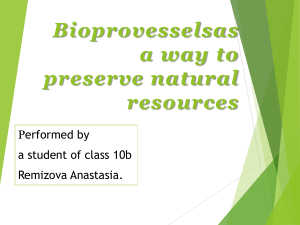
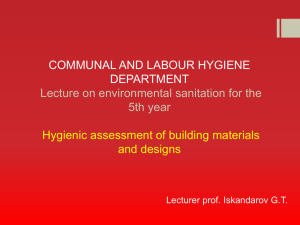
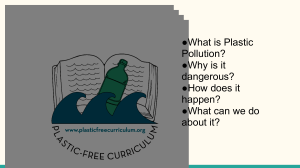
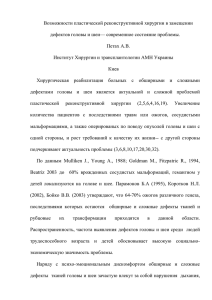
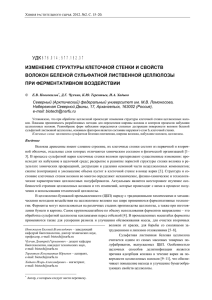
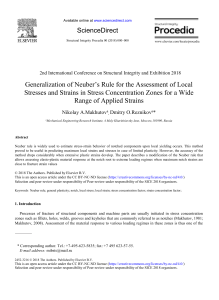

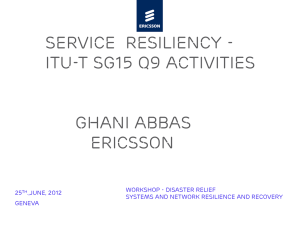
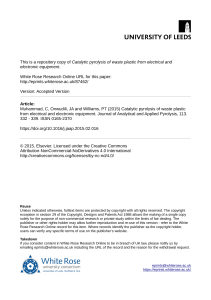
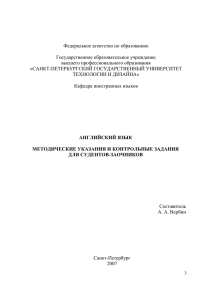
![[Michael C. Pirrung] Handbook of Synthetic Organic(z-lib.org)](http://s1.studylib.ru/store/data/006236139_1-286bb5a91bdd8857ebb85cf974fb798c-300x300.png)